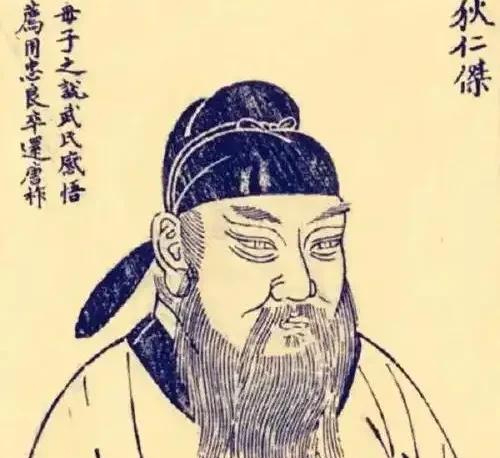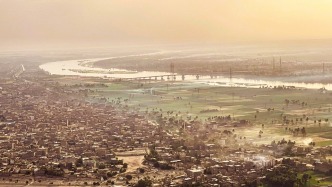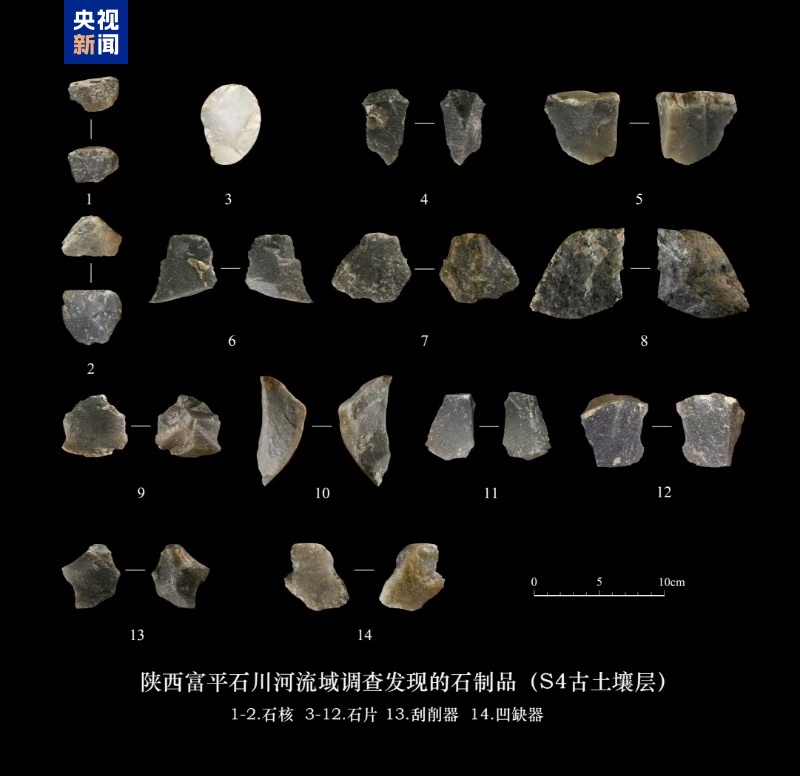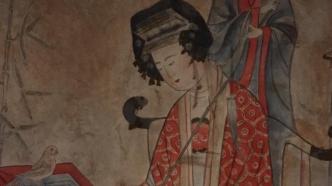
There is the legendary tomb of Di Renjie in the White Horse Temple in Luoyang. Recently, this place was clearly marked as the tomb of Di Renjie, which attracted attention from many parties.
However, there is no clear record in historical materials that Di Renjie was buried in the White Horse Temple. Since Di Renjie and Wu Zetian's favorite Xue Huaiyi were both named "Duke of Liang", it is possible that the tomb owner was mistakenly identified due to confusion in titles. In fact, people in the Northern Song Dynasty already recognized this tomb as Di Renjie's tomb and built a ancestral hall to worship him. Monuments continued to be erected in the Yuan and Ming dynasties to commemorate him, forming a cultural inertia.
Shi Jiazhen, former director of the Luoyang Cultural Relics and Archaeology Research Institute and Longmen Grottoes Research Institute, said in an interview with The Paper today that the listing of the tomb of Di Renjie may be a cultural tourism initiative, and does not mean that the owner of the tomb is Di Renjie. "From an archaeological perspective, there is no archaeological evidence to prove that this is the tomb of Di Renjie."
Di Renjie (630-700), courtesy name Huaiying and pseudonym Qixi, was a native of Taiyuan, Bingzhou (now Xiaodian District, Taiyuan, Shanxi). He was a politician and a famous prime minister in the Tang Dynasty. During his tenure as prime minister, he dissuaded Wu Zetian from her plan to expand the territory. Later, in order to restore the Tang Dynasty, he risked his life to make a suggestion, prompting Wu Zetian to make up her mind to recall Li Xian, the Prince of Luling, and make him the crown prince. He died of illness in September 700.

Portrait of Di Renjie, a famous Tang Dynasty minister, in ancient books
The local government: It is still unclear whether the owner of the White Horse Temple ancient tomb is Di Renjie.
There is a circular earthen mound about 300 meters southeast of the mountain gate of Luoyang White Horse Temple. There are two stone tablets in front of the tomb: the eastern tablet was re-erected in the 21st year of Wanli in the Ming Dynasty (1593), and is engraved with the eight characters "The Tomb of Di Liang, a Loyal Minister of the Tang Dynasty"; the western tablet was erected in the 3rd year of Tianshun in the Ming Dynasty (1459), recording the poems and prefaces of Yuan and Ming literati praising Di Renjie. There are stele pavilions and stone lions around the tomb. The northern and southern tombstones are respectively "The Tomb of Di Renjie, a Famous Prime Minister of the Tang Dynasty" and "The Tomb of Di Liang, a Famous Prime Minister of the Tang Dynasty", but both were re-engraved by later generations.

The "Notice Board of the Person Directly Responsible for Cultural Relics Safety" in Luoyang White Horse Temple indicates the tomb of Di Renjie
A few days ago, relevant staff said in an interview with the media that the public notice board was hung up because "it has been confirmed, and it would not be hung if it was not confirmed." And staff from the Luoyang Cultural Relics Bureau said that the current mainstream view is that based on the on-site inscriptions and historical data analysis, the tomb in the White Horse Temple is the tomb of Di Renjie. As for the different opinions of the outside world, they think it is also normal.
The direct responsible unit for the tomb of Di Renjie in Baima Temple is the People's Government of Baima Temple Town, Chanhe District, and the public announcement unit is the Culture and Tourism Bureau of Chanhe District. As the direct responsible person, the relevant staff of Baima Temple Town Government also responded in an interview with Da Wan News on April 22 that they could not give a definite answer as to whether the tomb owner could be finally confirmed to be Di Renjie.
Archaeologists: There is no historical record that Di Renjie was buried in the White Horse Temple, it may be the tomb of Xue Huaiyi
Regarding the latest public notice board of "Di Renjie's Tomb", Shi Jiazhen, former director of Luoyang Cultural Relics and Archaeology Research Institute and director of Longmen Grottoes Research Institute, said in an interview with The Paper today that the signboard may be a cultural tourism measure, and does not mean that the owner of the tomb is really Di Renjie. "From a professional archaeological perspective, there is no archaeological evidence to support that this is Di Renjie's tomb."
Archaeologist Su Jian once wrote in the Henan Cultural Relics and Museums Research Academic Journal "Central Plains Cultural Relics" that Di Renjie was buried in the White Horse Temple, which was not recorded in history and was impossible. However, "Zizhi Tongjian" recorded: " Monk Huaiyi became more and more arrogant, and the Queen Mother (Wu Zetian) hated him. ... She ordered King Jianchang Wu Xiuning to lead warriors to beat him to death, sent his body to the White Horse Temple, and burned it to build a pagoda ." Monk Huaiyi was Xue Xiaobao, the abbot of the White Horse Temple during the Wu Zhou Dynasty. Because he was the favorite of Wu Zetian, he was called "Wild Fox Zen" in history. Because he presided over the repair of the Mingtang and Tiantang in the Tang Palace in Luoyang, "he was honored as the General of the Left Guard and the Duke of Liang for his merits." Because he was buried in the White Horse Temple and was the Duke of Liang, he had the same title as Di Renjie, so Fan Zhixu of the Song Dynasty mistakenly thought that this was Di Renjie's tomb and built a temple, carved stones, and marked the tomb. This kind of misinformation continued until the Ming and Qing Dynasties. According to the above analysis, the White Horse Temple Tomb should be the tomb of Xue Huaiyi, which was built by Fan Zhixu, a scholar of the Longtu Pavilion of the Song Dynasty, in the first year of Daguan after the tower built in Wu Zhou collapsed.

Luoyang White Horse Temple is the first official temple established after Buddhism was introduced into China.
A Tang Dynasty history researcher told The Paper: "The conclusion of using Ming and Qing dynasty inscriptions to determine that the tomb is from the Tang Dynasty is questionable because there is no physical evidence from the Tang Dynasty. Moreover, Di Renjie opposed Wu Zetian's worship of Buddhism during his lifetime, which is inconsistent with the Buddhist background of the White Horse Temple. Moreover, most of his family tombs are concentrated in Mangshan. However, due to the cultural inertia between the Yuan and Ming dynasties, word of mouth among the public, and local competition for celebrity cultural resources can promote the development of cultural tourism, so it is understandable that the local cultural and tourism department erected a monument."
Archaeological evidence of Di family tombs in Mangshan, Luoyang
Another site believed to be Di Renjie's tomb is Shuangbei'ao in Mangshan, Luoyang (located north of Zhaiquan Village, Mengjin County, Luoyang).
It is reported that the western stele was originally better preserved among the two steles in Shuangbei Ao, with the words "The Stele of Di Fujun, the Former Governor of Qiongzhou in the Tang Dynasty". The seal title of this stele is "The Stele of Di Fujun, the Former Governor of Qiongzhou in the Tang Dynasty", with 3 lines and 4 characters per line. The main text is in regular script, with 31 lines and 61 characters per line. The handwriting is clear and elegant, with a little ink from Wei stele. Although he is not a famous calligrapher, his style seems to follow Chu Suiliang's "Yanta Shengjiao Xu", and it must be written by a great hand. Wang Chang's "Jinshi Cuibian" in the Qing Dynasty recorded the remaining text to examine his personal affairs. Di Zhixun, the father of Di Renjie, was posthumously named the Governor of Qiongzhou, so this is the place where Di Zhixun was buried.

Shuangbei Aoxibei
According to the records written by Luoyang scholar Su Jian during his visit to Shuangbeiao in the 1980s: It is said that Liangzhou Village in Mengjin is the former residence of Di Renjie, and his tomb is in the south of the village, about 10 kilometers away from Shuangbeiao. Volume 3 of the Qing Dynasty's Mengjin County Annals states: "The tomb of Di Renjie, Duke of Liang, the right prime minister of the Tang Dynasty, is located in the south of Liangzhou Village, west of the county (west of the old city of Mengjin). According to the old records, someone who dug soil in the past found a stone. It was known to be Di Gong's tomb, and the western part of the tomb is now the site. It is suspected to be the tomb of his son Di Guangsi." And Volume 85 of the Henan Prefecture Annals, "Arts and Literature Records", Part 3, "Tomb Records of Di Wenhui, Duke of Liang, Tang Dynasty", also states: "Twenty miles east of Luocheng, there is a stone on the left side of the White Horse Temple, inscribed with the tomb of Di Lianggong, a loyal minister of the Tang Dynasty", saying that his descendants "did not bury him after his death. It was not because the years were so long that they could not be traced. The hills were covered with willows and became fields for crops. But the tomb of this duke has survived the Five Dynasties, Song Dynasty, and Yuan Dynasty, and it has remained standing alone. Those who look out the road can see the stone inscriptions, but no one has ever worshipped at the tomb, let alone worshipped it!" From these records, it can be seen that doubts had been raised about the tombs of Di Renjie in Liangzhou Village and the White Horse Temple during the Ming and Qing Dynasties.
According to records, when scholars Wu Yi and Huang Yi of the Qing Dynasty came to investigate, they speculated that someone had found the tombstone of Di Lianggong in this area before and placed it near the east side of the White Horse Temple, but they did not know that the tomb of the Di family was in Shuangbei'ao, which was further north. Wu Yi recorded: "In the past, Wang Junyu, the magistrate of Luoyang, visited the tomb of the ancestors of the Di family in Liyang and found the Lianggong stele in the grass. He then erected it to the east of the White Horse Temple and sealed it with a tree. They did not know that the tomb of the ancestors of the Di family was actually on the northern mountain of Pingle, and the common name 'Shuangbei' was because of this."
In the 1990s, the epitaph of Di Jianmo, the great-nephew of Di Renjie, was unearthed in Shangtun Village, Pingle Township, Mengjin County, near Shuangbei'ao, proving once again that the tomb of the Di family was located here. The epitaph praised Di Gong as "a great loyalty bestowed by heaven, who alone suppressed the cries of females, continued the imperial power after it was broken, restored the enlightenment after it was abolished, rejuvenated the present and the past, and made a name for himself in the history of the country". It also clearly recorded that Di Jianmo was "buried in Shuangluo Village, Jinyong Township, Luoyang County, Henan Prefecture, and buried in the tomb of Liang Gong". The "buried in the tomb of Liang Gong" is believed to be buried next to Di Renjie's tomb.
A researcher from Luoyang Museum told The Paper that Shuangbei'ao is located in the north of Jinyong City, the ancient city of Luoyang during the Han and Wei dynasties, which is in line with the Tang Dynasty custom of burying the rich and powerful families together (such as the families of Li Deyu and Yao Chong). The tombs of Di Renjie's father and great-nephew are both nearby, further proving the authenticity of the Di family cemetery.
Shi Jiazhen, former director of the Luoyang Cultural Relics and Archaeology Research Institute and Longmen Grottoes Research Institute, said in an interview with The Paper that they had conducted a special project on the Mangshan Tomb Area and did not identify the tomb of Di Renjie. As for the tomb of the Di family found here, he said there was archaeological evidence pointing to it, but it was incomplete.
Other disputed sites: Qianling Mausoleum in Shaanxi and other places
The "New Records of Qian County" in the Republic of China period stated that there was a tomb of Di Renjie to the east of Qianling Mausoleum, but Di Renjie was not on the list of eight ministers buried with the emperor in Qianling Mausoleum during the Tang Dynasty. This statement may have originated from the fabrication of "famous ministers buried with the emperor" in later generations.
In addition, there was a Di Gong Temple and a tomb in Siqian Town, Taihu County, Anhui Province. It is said that Di Renjie built this temple because the people were grateful for the benefits he brought to the local area when he was the magistrate of Pengze. In 1959, the original site was flooded due to the accumulation of water in Huating Lake, and the "Di Gong Pavilion" was built later to commemorate it. In fact, it has nothing to do with whether the cemetery is here.
Some historians and archaeologists told The Paper that the presence of Di Renjie's tomb in many places reflects the respect for his historical status by later generations, and that local competition for celebrity cultural resources can actually promote the cultural tourism industry. Based on current archaeological evidence, if Di Renjie's tomb really exists, it is more likely to be in the Di family tomb area near Shuangbei'ao in Mangshan.
Appendix: Timeline of the controversy surrounding Di Renjie’s tomb
Tang Dynasty: Di Renjie died in the first year of the Jiu Shi period (700 AD), and there is no clear record of his burial place.
Song Dynasty: It was believed that the White Horse Temple Tomb was the tomb of Di Renjie, and a temple was built to commemorate him.
Yuan and Ming Dynasties: A monument was erected to strengthen the legend of the White Horse Temple Tomb.
Qing Dynasty: Scholars Wu Yi and Huang Yi of the Qing Dynasty visited Shuangbei’ao in Mangshan and found clues to the tombs of the Di family. They speculated that the tomb of Di Renjie in the White Horse Temple was a misunderstanding. Wu Yi recorded: "In the past, Wang Junyu, the magistrate of Luoyang, visited the tomb of the ancestors of the Di family in Liyang and found the Liang Gong stele in the grass. He then erected it to the east of the White Horse Temple and sealed it with a tree. I didn’t know that the tomb of the ancestors of the Di family was actually on the northern mountain of Pingle, and the common name ‘Shuangbei’ao’ was because of this."
Modern times: The inscription on the tombstone of Di Zhixun, Di Renjie's father, reads "The Monument of Di Fujun, the Former Governor of Qiongzhou in the Tang Dynasty". The tombstone of Di Jianmo, Di Renjie's great-nephew, unearthed in the 1990s proved that the Di family tomb was located here and confirmed the judgment of Wu Yi and Huang Yi. The site where the tombstone was unearthed and the burial place recorded indicate that the tomb of his great-uncle Di Renjie, the Duke of Liang, may also be in Shuangbei'ao, north of Zhaiquan Village, Mengjin County today.


